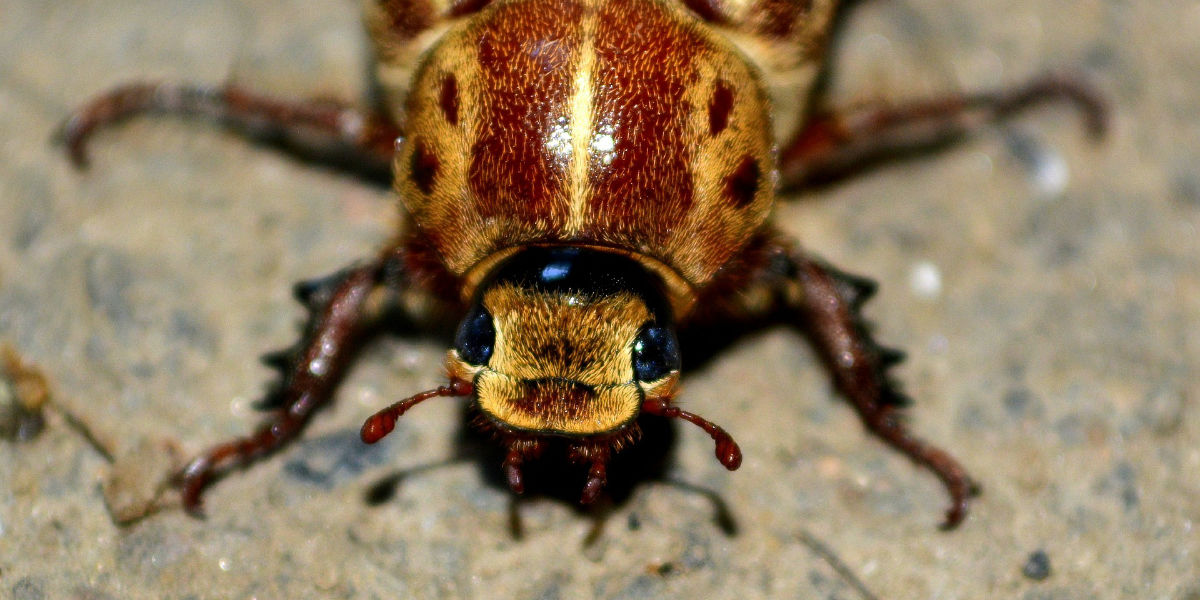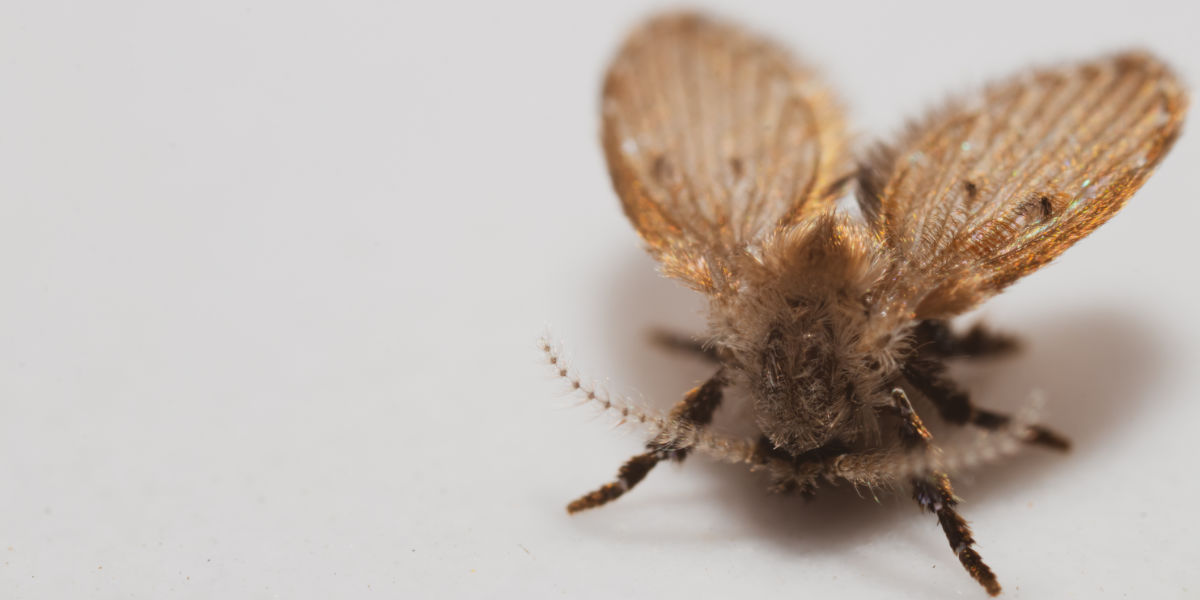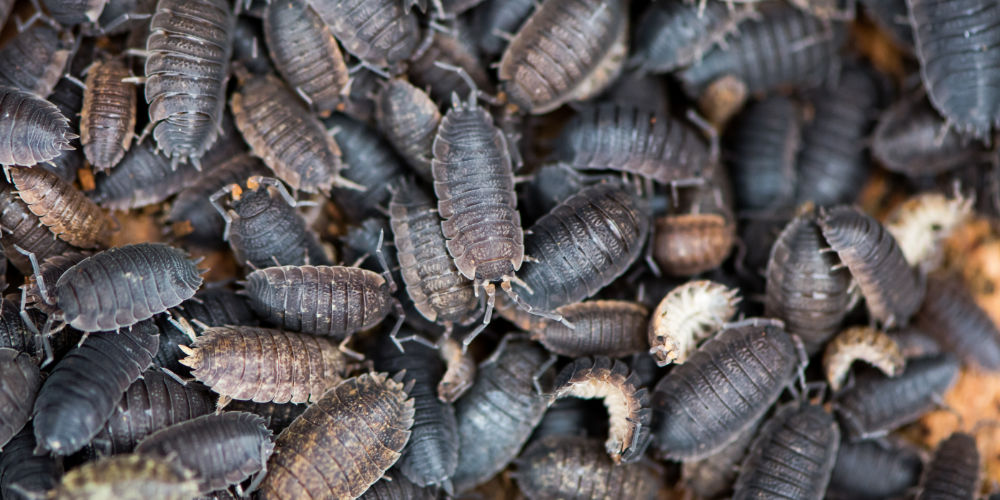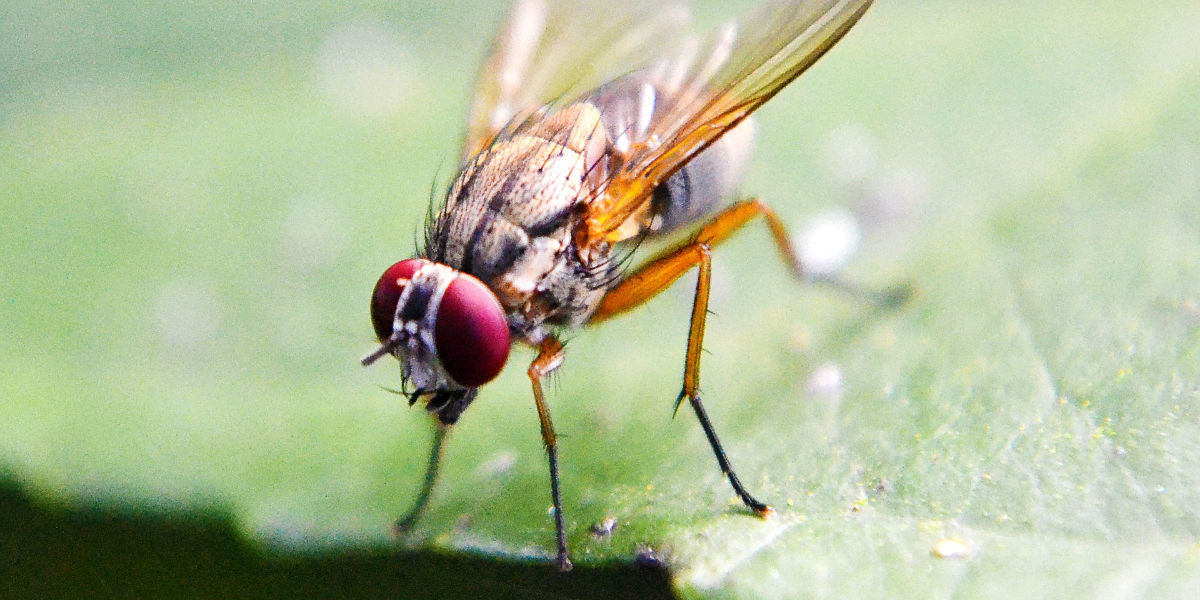What Types of Insect Pests Are Living in My Home?

Your home can be a thriving ecosystem for a number of pests and creepy crawlies. Most of the time, you won’t be aware of their presence, but when they begin to grow in numbers, they can infest your home and become a persistent nuisance. In this article, we’re looking at some of the different types of insects you might find living in your home, which will include information to help you identify them, and learn how they can infest your property.
Silverfish

What do they look like?
Silverfish are easy to identify by their shimmery, silver appearance and rapid, wriggly movement. These nocturnal creatures, often caught in glimpses, darting for safety as you switch the bathroom light on, are slender, soft and small — usually no larger than 25mm.
Where can I find them?
Silverfish love moisture and humidity, which is why you’ll usually spot them in the bathroom — congregating in and around fluffy bath mats, if you have any. They can also be found in cardboard boxes, cupboards and drawers. Anywhere dark with ample food — things like bindings, dried foods, fabrics and cardboard — is a likely sanctuary for silverfish.
How do I prevent and get rid of silverfish?
Reducing the amount of moisture and humidity in your home, particularly your bathroom is the most effective way of preventing an infestation of silverfish. If an infestation has already taken hold, the team at Pest Defence can help you figure out an action plan to get rid of them. Find out more in our guide to silverfish.
Drain flies

What do they look like?
Also known as sink flies, these pesky creatures typically grow to between 2-5mm in length. Their body and wings are covered in hair, and the large wings cover most of their body, making them the most recognisable feature of the fly.
Where can I find them?
In your drain! They thrive on all the gunk that collects in your sink drains, and will lay their eggs in this environment. With an infestation, you will see drain flies buzzing around the sink area and the walls nearby, as they fly in and out of the drain.
How to prevent and get rid of drain flies
The cleaner your drains are, the less likely it is that you’ll have a drain fly infestation. But even if you clean your drains, the infestation might recur — pointing to a clog deeper in the drain system. In persistent cases, call in a professional pest control company to find and remove drain flies at the source.
Cockroaches

What do they look like?
The scattering creatures are the poster child for household urban pests. Their distinct antennae, strong exoskeleton and flat body are easy to identify. They are usually a dark brown-reddish colour, with a lighter brown band across their backs.
Where can I find them?
Cockroaches are usually found in the kitchen or bathroom — hiding under appliances, near your drains or behind the toilet. They can be difficult to locate, but if you see just one poking out from behind the fridge, you’re likely to find more hidden away nearby. Dark, moist areas are the chosen home for cockroaches, and so is clutter and dirt.
How to prevent and get rid of cockroaches
Cockroaches are notoriously persistent. When you have an infestation on your hands, it’s difficult to counteract on your own. You might be able to trap and remove a few of them, but you have to eliminate the root of the issue, else more cockroaches will appear. The services of an experienced pest control engineer are essential when dealing with cockroaches, so save yourself the stress and contact Pest Defence. You can read more about cockroaches in our article about preventing and getting rid of a cockroach infestation.
Weevils
What do they look like?
Weevils are snout-nosed grain beetles, who typically measure between 3-6mm long — although rice weevils, in particular, are as small as 1.5mm in length. The most distinguishing feature of the weevil is their long, thin snout, which is at odds with its relatively plump, almost prune-like body.
Where can I find them?
Weevils make their home in dry foods and grains, such as rice and cornflour. They actually live inside the food itself, and will burrow into individual rice grains where they will lay their eggs. Because of this, it’s almost impossible to tell you have an infestation until they hatch, and the offspring emerge.
How to prevent and get rid of weevils
It’s hard to prevent a weevil infestation as many can hitchhike into your home via food packaging. If an outbreak occurs, you should purge all your dry food and clean your cupboards thoroughly — although this isn’t a sure-fire way of eliminating all the larvae. For the most thorough job, a pest control expert will be invaluable. Read our guide to flour weevils for more info.
Woodlice

What do they look like?
The woodlouse is technically a crustacean, and has a distinctive grey exoskeleton which has numerous segments, identified by ridges. From above, you will only see this ‘armour’, with two thin antennae poking out ahead of the woodlouse, while underneath, its many legs more resemble a millipede.
Where can I find them?
Often, you’ll find woodlice outside underneath rocks, logs and in soil. In the home, they like dark, moist areas as well as fabric-heavy locations, so the edges of carpets are a common hiding place.
How to prevent and get rid of woodlice
Often, a woodlouse in your home is more an accident than an infestation. However, they can still thrive under the right conditions, so reducing the amount of moisture and damp in your home is a good start — make sure to treat any mould as soon as you see it developing. Find out more with our guide about woodlice here.
Fruit flies

What do they look like?
Fruit flies are a light tan colour, and measure roughly 3mm in length. They have red eyes, and have a grey underbelly — though, when you see them flying around, you will notice the strong tan colouration more than anything.
Where can I find them?
A fruit fly infestation can occur before you know it. You’ll typically find fruit flies buzzing around kitchen bins and worktops, and while you may only see a few at first, their eggs can hatch within 24 hours. This means an infestation can be underway in no time at all. Bins, fruit bowls, kitchen worktops and windows are all common locales for fruit flies.
How to prevent and get rid of fruit flies
Once in your home and multiplying, fruit flies are a pain to get rid of without professional help. Prevention is also difficult, as it’s hard to monitor the condition of all fresh food which enters the home. Storing fruit in the fridge is a good start, and so is regularly taking out the rubbish — even more regularly than you might do already. We have a guide on preventing fruit flies in the kitchen.
Meal moths
What do they look like?
Adult Indianmeal moths — also known as the pantry moth — has two long, sleek wings which form a single consistent pattern, like a butterfly. They measure around 15mm, and have a similar appearance to other types of moths. The larvae are tiny, thin creatures, usually an off-white colour, and can move quickly to find places to cocoon themselves, forming the pupae stage of their life cycle
Where can I find them?
With a name like pantry moth, it’s not surprising that these pests find a home where dry food is stored. They particularly like flour and dried fruit. The larvae can often be found on the inside of open cereal boxes, for example, and similar areas in your food cupboards.
How to prevent and get rid of
As usual, prevention is the best approach, so focus on sealing your dry food in containers with sturdy lids. If an infestation has already taken place, then call in a pest control engineer to find and eliminate both adult meal moths and their offspring.
Ticks

What do they look like?
Adult ticks take an oval shape and have eight legs — making them easily confused with small house spiders. Ticks feed on blood, and will grow larger as they feed and become filled with the substance.
Where can I find them?
Ticks are usually brought inside by pets. They will latch on and bite into their skin, burrowing their head inside, under the surface. Ticks can also do the same to people, often being contracted after walking through long grass.
How to prevent and get rid of ticks
Unlike some other pests in this article, ticks present a danger to humans and pets. They are a vector for Lyme disease, and can transmit it among the public if they are already carrying the disease. Because of this, it’s vital that an infestation is treated by a professional pest control engineer. If a tick is lodged in your skin, or your pets, you need to remove the tick carefully with tweezers — as there is a risk that the head can be left inside the skin.
Fleas
What do they look like?
Fleas are more recognisable by their jumpy, erratic movement rather than their tiny size or black colouration. If you see something bounding through the fur of your pet, it’s more than likely a flea.
Where can I find them?
Fleas latch onto pets and can be brought inside at any time. Fleas can become entrenched in your home quickly after introduction, and their larvae will burrow deep into carpets and gaps in hardwood floors and furniture. Fleas love clutter, too, so they might be found in storage rooms — such as the loft — where there is a lot of dust and old wood.
How to prevent and get rid of fleas
Flea treatment for your pets will stave off most infestations, but pets who love the outdoors will eventually bring some fleas inside. If they do cause an infestation, it’s going to be time-consuming, frustrating and virtually impossible to remove the fleas on your own, so get in touch with Pest Defence for a thorough pest control service. We also have an article with more info about protecting yourself from fleas.
Cluster Flies
What do they look like?
Cluster flies measure between 8mm and 10mm in length, and are dark brown in colour with a notable block/checkered pattern underneath their overlapping wings. The thorax is peppered with light yellow fur, and, when collected in large groups, you can identify cluster flies by smell as they give off a sickly smelling pheromone.
Where can I find them?
Cluster flies seek shelter and warmth during the colder months; from autumn to winter, they may congregate inside your home — especially if yours is one which receives a lot of sunlight. To safely hibernate, cluster flies will find secluded spaces, such as the attic, and nest there. They can also be found on window sills or near windows thanks to the abundance of natural light, and will emerge in spring once temperatures rise.
How to prevent and get rid of cluster flies
Because cluster flies can congregate in such large numbers, this nuisance pest can become difficult to control without preventative measures. A vacuum cleaner will work well for isolated groups, but for effective control and prevention, call in a professional. Read our cluster flies guide for more information.
If you’re having trouble with insects pests in your home, contact the expert team at Pest Defence. An insect infestation can be incredibly persistent, and without the right know–how and equipment, a long–term fix can be out of reach. Our friendly team is on hand to identify the cause of your infestation, eliminate it and help you prevent future recurrences, so don’t hesitate to talk to us if you’re in need.


